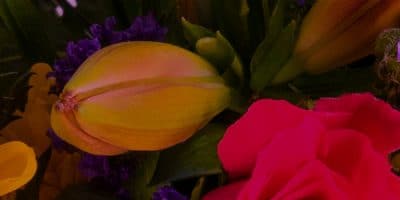Durga Puja 2020: Significance and History of Durga Puja

A riot of colours, of rituals steeped in tradition and customs ingrained in time, Durga Puja is arguably the biggest festival in West Bengal.
Significance and History of Durga Puja
Celebrated widely in West Bengal and neighbouring states like Orissa, Bihar, Assam and Tripura, Durga puja this year commences on 22-Oct and ends on 26-Oct. During this period, people pray to the embodiment of power, Goddess Durga by installing huge idols of clay that are set up in elaborate pandals. It is common to see idols of the ten-armed goddess riding atop a lion being worshipped in ornately decorated pandals with great fervour and passion across these states. The tableau of Goddess Durga also has the idols of Lord Ganesha, Goddess Saraswati, Goddess Lakshmi and Lord Kartikeya.
The earliest record of Durga Puja being celebrated grandly dates back to the 1500s when it was patronized by the zamindars and rich landlords. The credit for the first community puja is given to a group of twelve friends of Guptipara in Hoogly who organized the puja and collected funds from local residents to perform the ‘baro-yaari’ puja way back in 1790. Since then the celebration of Durga Puja in West Bengal especially in the capital city Kolkata has grown by leaps and bounds with new age pandals being built year on year centred around creative and innovative themes. One of the themes this year incidentally is ‘Coronasura’ and the Goddess is seen slaying the coronavirus monster rather than the demon Mahishasura.
Preparations galore
Preparations for Durga puja start as early as April and the new year aka Pôhela Boishakh (Baisakhi) is considered an auspicious day for many pandal organizers to start preparation. Path breaking and socially relevant themes for the pandals are decided and the artists to work on the pandal and Pratima (idol) are finalized. This is considered a crucial step as artists are in high demand and organizers want to work with the best of them. Once the preparations are done and details finalized, the customary Khuti puja is done which originates from centuries old tradition of ‘Kathamo puja’ wherein the wooden frame on which the clay idol is built is worshipped. This signals the commencement of the festivities and is done by most pandal committees on the auspicious day of the Rath Yatra.
The idols are laboriously handcrafted by a community of highly skilled artists who reside in Kumartuli which is a potter’s locality in North Kolkata. Materials used include clay from river beds, hay, straw and wooden chips. The idols are made with dedication and an unstinted devotion and they are kept completely ready except for the eyes. The latter are drawn after a special ritual called Chokku Daan or Chakshudan on the day of Mahalaya Amavasya. It is believed that the Goddess descends on earth on this day and blesses the artist to craft Maa Durga’s expressive eyes. The idols are then taken home or to the pandals and grandly decorated with vermilion, jewellery and silk clothes.
Unique rituals
There are several rituals that mark the festivities of Durga Puja that start on Shashti. People wear new clothes on this day and welcome the goddess with the blowing of the conch and beating of drums. The idol’s face is uncovered and this ceremony is called Bodhon. On Saptami which is often referred to as Maha Saptami, a ritual called Nabapatrika or the Kola Bou Snan is performed wherein eight leaves from eight auspicious trees are tied to a small banana plant. The latter is wrapped in a red bordered saree and bathed and the nine leaves are considered to be the nine avatars of Goddess Durga. On Maha Ashtami it is time for rituals like Kumari Puja, Anjali and Shandhi Puja. Dhunuchi Naach is a special custom performed in the evening on Ashtami and Navami after aarti. Women hold clay pots filled with coconut husk, incense and camphor and perform a dance. When the clay pots are lit, the fragrance of the camphor and incense create a soulful atmosphere quite like none other. The last or tenth day is all about bidding farewell to the goddess as she is immersed in a ritual called Visarjan. Married women spray vermilion on each other in a custom called Sindur Khela and greet each other with good wishes until the next puja.
Festivities and food
Durga puja is a time when friends and relatives come together, shop for new clothes and exchange gifts with one another. Pandal hopping and catching up with near and dear ones is a key activity amidst enjoying the delectable bhog or festival food that is served in the pandals.





